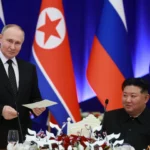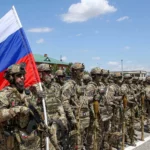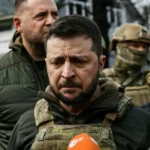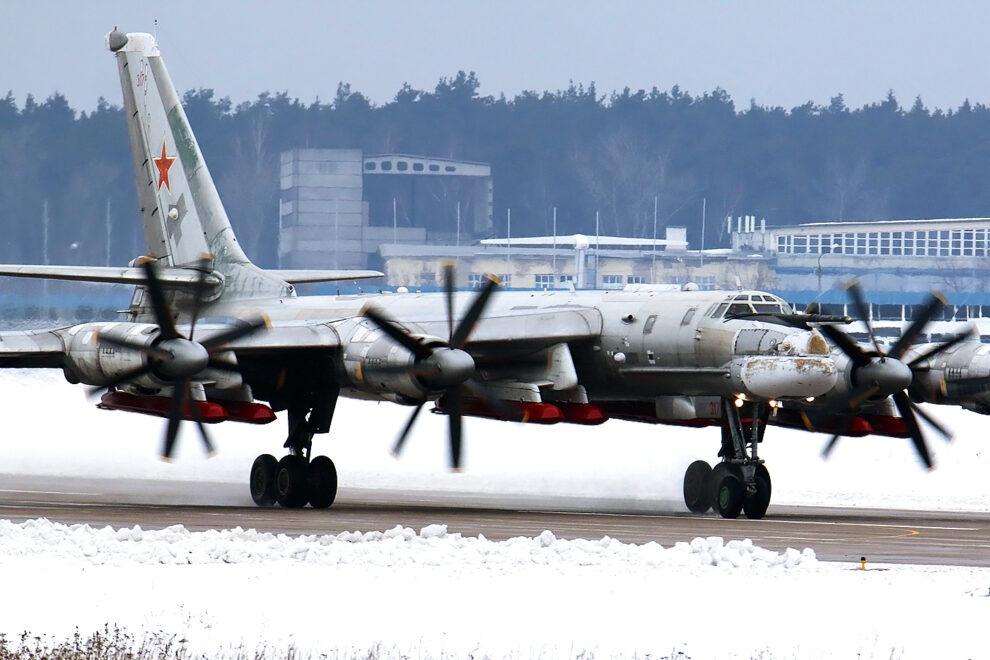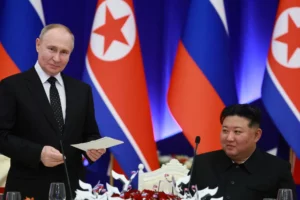One of the most surprising aspects of Russia’s war in Ukraine has been Moscow’s limited use of its larger and more advanced air force over Ukrainian territory. For senior US Air Force leaders, Russia’s decision to hold its airpower back is all the more surprising because many of the air-defense systems that Ukraine is using were originally designed by the Russians.
“As far as the Russian Air Force, I think that most everybody thought that they would be able to take out” Ukraine’s air-defense systems early in the war, Gen. James Hecker, commander of US Air Forces in Europe, said during a Defense Writers Group event on Friday.
“They weren’t able to do that. I know it’s a hard task to do, because it’s hard for us to do, but it seems like they kind of gave up on that pretty early on,” Hecker told reporters at the event.
Shortly after Russia attacked Ukraine on February 24, 2022, military experts noted that the hundreds of combat jets that it had massed around northern, eastern, and southern Ukraine mostly stayed on the ground during the first several days of the war, depriving Russian troops of air cover and allowing Ukrainian jets to continue flying.
Justin Bronk, an airpower expert at the Royal United Services Institute, a British think tank, pointed to several factors to explain Russia’s reluctance to use its airpower, including a lack of precision-guided munitions, a limited ability to coordinate large-scale combat operations, and a dearth of experienced pilots.
Whatever the reasoning, Russia’s decision not to make wider use of its air force caught US military leaders off guard, especially since Ukraine’s antiaircraft weapons were largely of Soviet origin and overlapped with much of what Russia has in its own arsenal.
“I would say that I was somewhat surprised” by Russia’s inability to control the air and knock out Ukrainian air defenses, Hecker said. “I know how hard it is to take down some of these systems, but I thought since the Russians built these systems that they would have some insight and a better way to figure out how to get around these systems.”
Hecker echoed Gen. Charles Brown Jr., the Air Force chief of staff, who said in June 2022 that he was surprised by the Russian air force’s failings in Ukraine. “The systems they’re going against are their own systems,” he said. “They should know them fairly well and how to defeat them.”
“It kind of begs a real question for me: How come they don’t understand their own systems and how they might defeat their own systems?” Brown added. (Brown has been selected to be the chairman of the Joint Chiefs of Staff, but his nomination and hundreds of other military promotions are being held by Sen. Tommy Tuberville.)
Prior to Russia’s invasion last year, Ukraine had pursued a yearslong military modernization effort. Changes to how Ukraine trained and equipped its troops and structured its armed forces made it better prepared to fend off Russia’s attack, but the Ukrainian military still entered the conflict using an array of Soviet-designed hardware, particularly in its aviation fleet and air-defense forces.
Ukraine still uses Soviet-era surface-to-air missiles, including S-300Vs for long-range defense, Tor-Ms for short-range defense, and a number of missiles for the defense of fixed sites, such as Igla shoulder-fired missiles, according to The Military Balance 2023, published by the International Institute of Strategic Studies in February.
Intense air-defense operations and the rapid influx of Western-made arms mean that the arsenal is now a multinational one. Ukrainian forces are now using US-made Patriot missiles and the US-Norwegian-designed NASAMS to defend against long-range threats as well as several Western-designed systems for short-range air defense. US-made Stinger shoulder-fired missiles and German-built Gepard antiaircraft cannons have also been put to high-profile use against Russian helicopters and drones.
A chief concern for the countries supporting Ukraine has been making sure those air-defense weapons have enough ammunition to fend off Russia’s aerial attacks, which have shifted in form and intensity but have not stopped during the 18-month war.
US intelligence assessments leaked online this spring suggested Ukraine could expend its supply of surface-to-air missiles for several systems by mid-year. A lack of Ukrainian surface-to-air missiles is one thing that could allow Russian aircraft to dominate the skies, Hecker said Friday, and ensuring Kyiv has enough of them is an ongoing focus of the Ukraine Defense Contact Group, which meets monthly to coordinate military aid to Ukraine.
“Typically we have over 50 nations that participate” in those meetings, Hecker said. “The number-one thing that is brought up every time that Ukraine needs is surface-to-air missiles.”
Source : Insider



